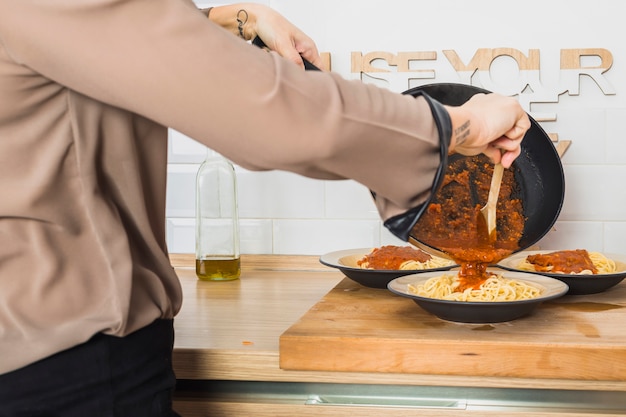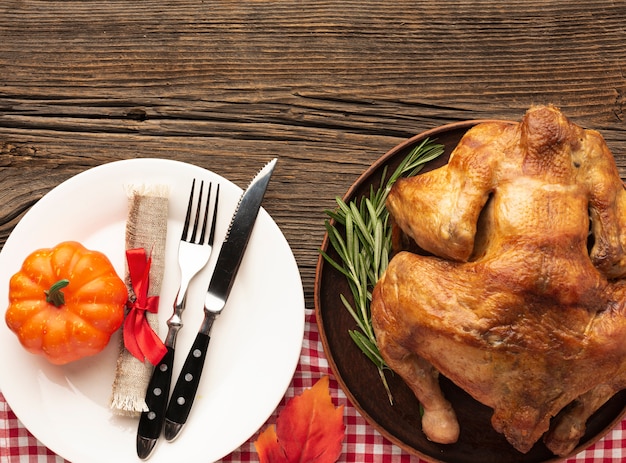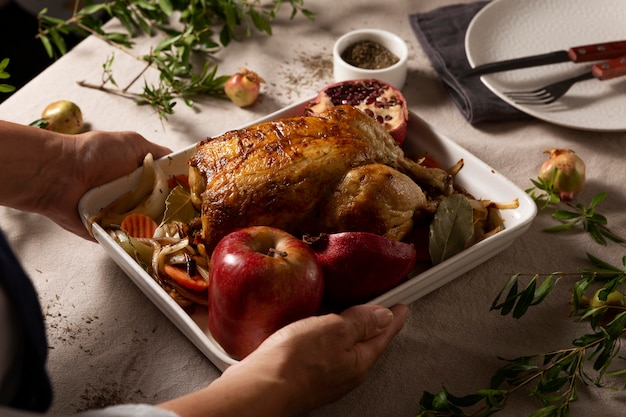As a seasoned chef and self-proclaimed chicken thigh enthusiast, I've spent countless hours in the kitchen, experimenting with various cooking techniques and temperatures to achieve that elusive perfect bite – a juicy, flavorful, and tender chicken thigh. And let me tell you, it's a quest worth undertaking! It's not just about achieving a safe internal temperature, but about unlocking the true potential of this versatile ingredient, revealing its rich flavor and succulent texture.
There's a reason chicken thighs are a culinary favorite. They're naturally more flavorful than breasts, thanks to their higher fat content, which contributes to their ability to retain moisture beautifully. This makes them incredibly versatile, perfect for grilling, roasting, pan-frying, baking, slow cooking, or even smoking. But the key to unlocking their full potential lies in understanding the perfect temperature. It's a delicate dance, a balance between heat and time, that can make all the difference between a succulent masterpiece and a dry, disappointing disappointment.
Part 1: Understanding the Science of Chicken Thighs

1.1 The Anatomy of a Chicken Thigh: Beyond a Single Piece of Meat
Before we delve into the temperature specifics, let's break down the anatomy of a chicken thigh. It's not just a single piece of meat, but a combination of two muscles: the thigh muscle (also known as the drumstick) and the leg muscle (which includes the thigh), connected by a thick tendon. This structure is crucial for understanding how heat affects the chicken thigh. The drumstick, being more active, has a denser, tougher texture, while the thigh muscle is more tender. Understanding this helps us approach cooking with the right techniques and timing.
1.2 The Role of Temperature: A Culinary Balancing Act
Temperature plays a critical role in cooking chicken thighs. Think of it as a balancing act. Here's why:
- Protein Denaturation: As heat increases, the protein molecules in chicken thighs begin to unravel and denature. This process is essential for creating texture and flavor. Think of the tender, flaky texture of roasted chicken. But too much heat can lead to overcooking and dryness. You know that rubbery, unpleasant texture we all want to avoid.
- Moisture Retention: When chicken thighs are cooked at the right temperature, the collagen and elastin within the meat break down and release moisture, resulting in juicy and tender results. This is the key to achieving that mouthwatering "fall-off-the-bone" experience. Overcooking, however, can cause the moisture to evaporate, leaving the meat dry and tough. This is the opposite of what we want!
- Fat Rendering: Chicken thighs contain a good amount of fat, which contributes to flavor and moisture. The right temperature allows the fat to melt and render, creating a delicious sauce or basting liquid. This not only adds flavor but also helps to keep the meat moist.
Part 2: The Perfect Temperature for juicy chicken thighs: Finding the Sweet Spot

2.1 The Internal Temperature: A Safe and Delicious Guideline
The most important factor to consider is the internal temperature. The USDA recommends a minimum internal temperature of 165°F (74°C) for cooked chicken thighs to ensure safety. However, for achieving juicy and flavorful results, we want to aim for a slightly lower temperature, around 155°F (68°C). This allows the meat to cook through while remaining tender and succulent.
2.2 Cooking Method Matters: A Tailored Approach
The ideal temperature will vary depending on the cooking method you choose. Each method has its own nuances that affect how the heat is applied and how the chicken reacts. Here's a breakdown:
| Cooking Method | Target Internal Temperature (°F) | Additional Notes |
|---|---|---|
| Grilling | 155-160°F | Direct grilling with high heat can lead to charring, so use indirect heat for a more even cook. |
| Roasting | 155-160°F | A lower oven temperature (around 350°F) will ensure a more even cook and tender results. |
| Pan-Frying | 155-160°F | Start with a high heat to create a crispy skin, then reduce the heat and cover to ensure even cooking. |
| Baking | 155-160°F | Similar to roasting, a lower temperature will promote tenderness and prevent drying out. |
| Slow Cooking | 150-155°F | The low and slow method allows for maximum tenderness and breakdown of connective tissue. |
| Smoked | 155-160°F | Smoking at a lower temperature (around 225-250°F) with wood chips will infuse the chicken with delicious smoky flavors. |
2.3 How to Check Internal Temperature: Your Culinary Ally
To ensure your chicken thighs are cooked to the perfect temperature, use a meat thermometer. It's your culinary ally in this quest for juicy perfection. Insert the thermometer into the thickest part of the thigh, making sure it's not touching bone. The thermometer should read between 155-160°F for most cooking methods. This is the golden rule!
Part 3: The Art of Perfecting the Temperature: Beyond the Basics

3.1 The Role of Time and Patience: A Culinary Virtue
cooking chicken thighs at the right temperature requires a bit of patience. Don't rush the process! Remember, the meat needs time to cook evenly and for the fat to render. This is where understanding the cooking method comes in handy. For instance, roasting chicken thighs at a lower temperature (around 350°F) for a longer time (about 45-60 minutes) will result in a more tender and juicy outcome.
3.2 Don't Overcook! A Culinary Faux Pas
The biggest mistake people make is overcooking chicken thighs. When they're cooked past the ideal temperature, they become dry and rubbery. To avoid this, it's crucial to check the internal temperature frequently and remove the thighs from the heat once they reach the desired temperature. This is where your meat thermometer becomes your best friend! It's a simple precaution that can save your dish.
3.3 The Importance of Resting: A Culinary Secret
Once your chicken thighs are cooked, it's essential to let them rest for a few minutes before carving or serving. This allows the juices to redistribute throughout the meat, resulting in a more tender and flavorful experience. Cover the thighs with foil to keep them warm and moist while they rest. This is a crucial step that many people overlook, but it makes a significant difference in the final result.
Part 4: Beyond Temperature: Tips for Juicy Chicken Thighs: Elevating Your Game
4.1 Brining for Maximum Moisture: Unlocking Flavor and Tenderness
Brining is a game-changer for achieving juicy chicken thighs. It involves soaking the meat in a salt-based solution for several hours, which helps retain moisture and enhance flavor. It's like giving the chicken a spa treatment, leaving it plump and juicy. You can create a simple brine with salt, sugar, and water, or get creative with herbs and spices. Experiment with different flavor combinations to find your favorite!
4.2 The Power of Marinades: Infusing Flavor and Tenderness
Marinades work wonders in tenderizing and flavoring chicken thighs. They can be as simple as a mix of olive oil, lemon juice, and herbs, or more complex, incorporating garlic, ginger, soy sauce, or other ingredients. The longer you marinate, the more intense the flavor will be. Marinating for at least 30 minutes is recommended, but ideally, for several hours, to allow the flavors to penetrate.
4.3 Don't Overcrowd the Pan: A Culinary Rule of Thumb
When pan-frying or grilling chicken thighs, avoid overcrowding the pan. This will prevent the meat from cooking evenly and could lead to steaming instead of browning. Give the thighs enough space to cook properly and develop a beautiful golden crust. This is a basic principle, but it's often overlooked, leading to uneven cooking and a less appealing final result.
4.4 The Importance of Skin: A Culinary Advantage
The skin on chicken thighs plays a crucial role in retaining moisture and creating a crispy, flavorful exterior. Don't be afraid to leave it on! If you prefer, remove the skin before cooking, but keep in mind that it will affect the final result. It's a matter of personal preference, but the skin truly adds to the experience.
Part 5: The Joy of Chicken Thighs: A Culinary Celebration
Achieving perfectly cooked chicken thighs is a rewarding experience. The juicy, tender, and flavorful results are worth the effort. They're the perfect accompaniment to a variety of dishes, from simple salads and roasted vegetables to hearty stews and flavorful curries. They truly are a culinary chameleon, adaptable to any style of cooking and any palate.
I often use chicken thighs to create a quick and easy one-pan meal. I simply toss them with chopped vegetables, herbs, and spices, then roast them in the oven until they're cooked through and the vegetables are tender. It's a delicious and satisfying meal that's perfect for busy weeknights. It's a testament to their versatility and how easily they can be incorporated into everyday meals.
Part 6: Personal Experiences: A culinary journey6.1 My Kitchen Experiments: A Journey of Learning
Over the years, I've had my share of kitchen mishaps, especially when it came to cooking chicken thighs. I've learned the hard way that undercooked chicken is dangerous, and overcooked chicken is a culinary tragedy. But through these experiences, I've learned a valuable lesson: cooking is a journey of discovery. It's about embracing the unexpected and learning from every mistake.
6.2 The Importance of Intuition: A Culinary Sense
While I rely on a meat thermometer for accuracy, I also trust my intuition. The touch test, where you gently press the chicken thigh to check its firmness, can be helpful in determining doneness. It's a skill that comes with experience, and it's crucial to pay attention to the nuances of the meat as it cooks. It's about understanding the feel of the meat, how it changes as it cooks, and using your senses to guide you.
Part 7: The Power of Variety: Exploring Culinary Possibilities
7.1 Exploring Different Cooking Methods: A culinary adventure
One of the things I love about chicken thighs is their versatility. They can be cooked in countless ways, each with its own unique flavor and texture. I've experimented with everything from grilling and roasting to pan-frying and slow cooking, and I'm always discovering new ways to enjoy them. There's always something new to explore, a new technique to master, a new flavor to discover.
7.2 Experimenting with Flavors: A Culinary Playground
I'm a firm believer that the right seasonings and sauces can elevate a simple chicken thigh to new heights. Whether it's a classic lemon-herb rub or a spicy chili glaze, I love exploring different flavors and creating dishes that are both satisfying and delicious. It's about pushing boundaries, trying new things, and creating something unique and flavorful.
Part 8: FAQs: Addressing Common Culinary Concerns
8.1 How long should I cook chicken thighs at 350°F?
At 350°F, chicken thighs should cook for about 45-60 minutes, depending on their size. It's important to check the internal temperature regularly to ensure they're cooked through. It's always better to err on the side of caution and check the temperature frequently. This will ensure that the chicken is cooked to the perfect level of doneness.
8.2 Can I use skinless chicken thighs?
Yes, you can use skinless chicken thighs, but they'll be drier and less flavorful. If you choose to remove the skin, I recommend brining the thighs to help retain moisture. This will help to counterbalance the loss of moisture that comes with removing the skin. It's a trade-off, but with the right techniques, you can still achieve delicious results.
8.3 How do I know when chicken thighs are done?
The best way to determine if chicken thighs are done is to use a meat thermometer. They're cooked through when the internal temperature reaches 155-160°F. The juices should run clear, and the meat should be firm to the touch. The thermometer is a reliable tool, but the visual and tactile cues are also important indicators of doneness.
8.4 Can I cook chicken thighs at a lower temperature?
You can cook chicken thighs at a lower temperature, such as 300°F, but it will take longer to cook through. This can be a good option if you want a more tender and juicy result. Lower temperatures allow the collagen to break down more thoroughly, resulting in a more tender and succulent texture.
8.5 What happens if I overcook chicken thighs?
Overcooked chicken thighs will be dry, tough, and rubbery. They may also lose their flavor and become less appealing. It's important to check the internal temperature regularly and remove the thighs from the heat once they're cooked through. Overcooking is a common mistake, but it's easily avoidable by using a thermometer and paying attention to the cooking process.
There you have it, folks! The perfect temperature for juicy chicken thighs is a journey of discovery, a culinary adventure that requires patience, attention to detail, and a touch of intuition. But with the right techniques, you'll unlock the full potential of these versatile and flavorful ingredients, creating dishes that are both delicious and satisfying. Happy cooking!
Everyone is watching

How to Cook Frozen Lobster Tails Perfectly: A Step-by-Step Guide
RecipesLobster. Just the word conjures up images of lavish meals, special occasions, and a taste of luxury. But let's...

Pork Fillet Cooking Time: How Long to Cook It Perfectly
RecipesPork fillet, or tenderloin as it's sometimes called, is a real favourite in our house. It's so versatile, and...

Pigs in a Blanket Cooking Time: How Long to Bake for Perfect Results
RecipesAh, pigs in a blanket. Just the name conjures up images of those delightful little parcels of crispy pastry en...

The Ultimate Guide to Cooking Delicious Frankfurters
RecipesLet's face it, we all love a good frankfurter. It's a classic, simple, and always satisfying. But let's be rea...

Wolf Meat Recipes: A Guide to Cooking Wild Game
RecipesLet's be honest, you don't see wolf meat at your local butcher shop every day. It's a bit of a wild card, but ...
